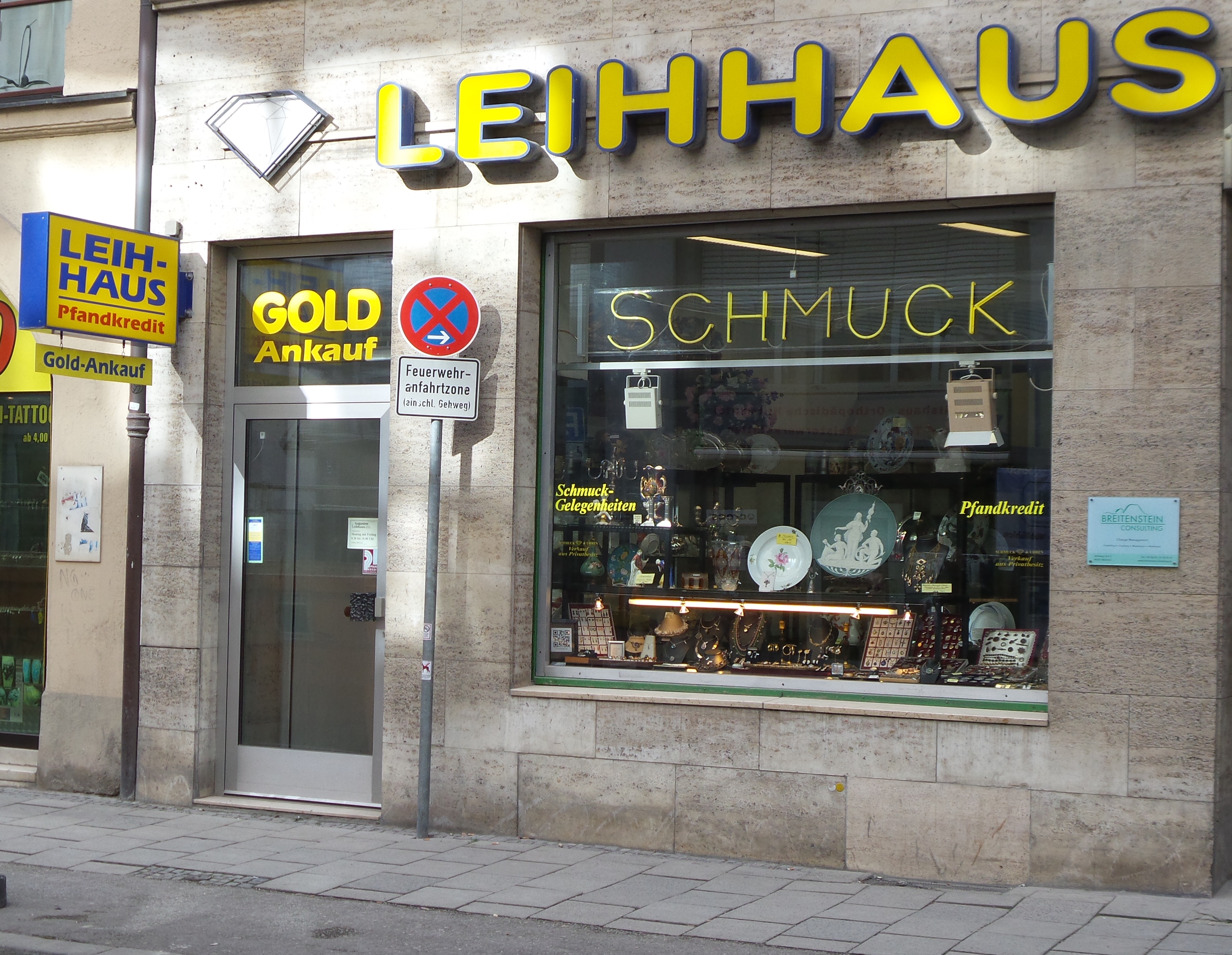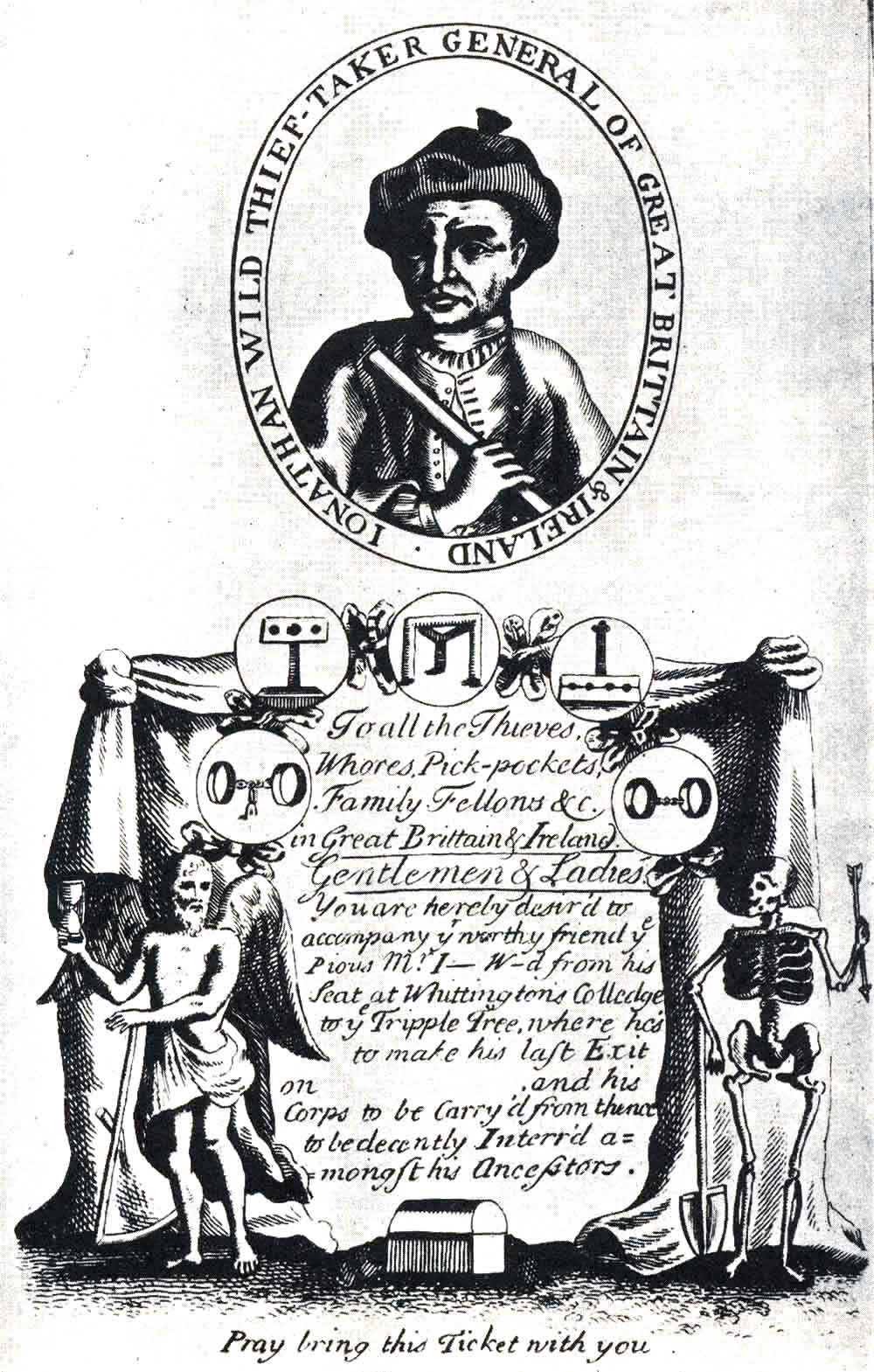|
Pawnbroker
A pawnbroker is an individual that offers secured loans to people, with items of personal property used as Collateral (finance), collateral. A pawnbrokering business is called a pawnshop, and while many items can be pawned, pawnshops typically accept jewelry, musical instruments, coins, gold, silver, firearms; as well as home audio equipment, computers, video game systems, televisions, cameras, and power tools being included as the world entered the Information Age. The items ''pawned'' to the broker or shop are themselves called pledge (law), ''pledges'', ''pawns'', or simply ''the collateral''. If an item is pawned for a loan (colloquially "hocked" or "popped"), within a certain contractual period of time the pawner may redeem it for the amount of the loan plus some agreed-upon amount for interest. In the United States the amount of time, and rate of interest, is governed by law and by the state commerce department policies. They have the same license as a bank, which is ... [...More Info...] [...Related Items...] OR: [Wikipedia] [Google] [Baidu] |
Fence (criminal)
A fence, also known as a receiver, mover, or moving man, is an individual who mens rea, knowingly buys stolen goods in order to later resell them for profit. The fence acts as a wikt:middleman, middleman between thieves and the eventual buyers of stolen goods who may not be aware that the goods are stolen. As a verb (e.g. "''to fence'' stolen goods"), the word describes the behaviour of the thief in the transaction with the fence. As is the case with the word ''fence'' and its derivatives when used in its other common meanings (i.e. as a type of barrier or enclosure, and also fencing, as a sport), the word in this context is derived from the word ''wikt:defence, defence.'' Among criminals, the ''fence'' originated in Thieves' cant, thieves' slang tracing from the notion of such transactions providing a "defence" against being caught. Thieves who patronise fences are willing to accept a low profit margin in order to reduce their risks by instantly "washing their hands" of illici ... [...More Info...] [...Related Items...] OR: [Wikipedia] [Google] [Baidu] |
Collateral (finance)
In lending agreements, collateral is a borrower's pledge of specific property to a lender, to secure repayment of a loan. The collateral serves as a lender's protection against a borrower's default and so can be used to offset the loan if the borrower fails to pay the principal and interest satisfactorily under the terms of the lending agreement. The protection that collateral provides generally allows lenders to offer a lower interest rate on loans that have collateral. The reduction in interest rate can be up to several percentage points, depending on the type and value of the collateral. For example, the Annual Percentage Rate (APR) on an unsecured loan is often much higher than on a secured loan or logbook loan. If a borrower defaults on a loan (due to insolvency or another event), that borrower loses the property pledged as collateral, with the lender then becoming the owner of the property. In a typical mortgage loan transaction, for instance, the real estate ... [...More Info...] [...Related Items...] OR: [Wikipedia] [Google] [Baidu] |
Pedro Romero De Terreros
Pedro Romero de Terreros (1710–1781), the first Count of Regla, was a mining magnate and philanthropist in 18th century colonial Mexico. Early life Pedro Romero de Terreros was born in Cortegana, Spain, on June 28, 1710, the fifth of six children and fourth son of Ana Gómez and José Romero de Terreros.Couturier, p. 12.Couturier, p. 31. His parents had little land or wealth but were related to the two largest landowners in Cortegana.Couturier, p. 14. Pedro and his brothers were all literate, although no documentation has been found as to how they were educated. Pedro showed signs of having a superior intellect, and his parents originally considered having him trained for the priesthood. It is likely that Romero de Terreros began his career as a clerk in Puerto de Santa María. There would have been little opportunity for advancement, and the pay would have been very low.Couturier, p. 20. As a younger son, Romero de Terreros would not have received the same support from ... [...More Info...] [...Related Items...] OR: [Wikipedia] [Google] [Baidu] |
Nacional Monte De Piedad
The Nacional Monte de Piedad is a not-for-profit institution and pawnbroker, pawnshop whose main office is located just off the Zócalo, or main plaza of Mexico City. It was commanded to be built between 1774 and 1777 by Don Pedro Romero de Terreros, the Count of Regla as part of a movement to provide interest-free or low-interest loans to the poor. It was recognized as a national charity in 1927 by the Mexican government. Since the first decade of the 21st century it has been a fast-growing institution, with over 200 branches all over Mexico and plans to open a branch in every Mexican city. Main office The main office is located on the northwest corner of the Zocalo on the corner of Monte de Piedad and 5 de Mayo Streets. Despite having gone through considerable modifications, it once was part of the estate owned by Hernán Cortés (1485–1547). In the area were the "Old Houses" of Moctezuma II's father, Axayacatl (1453?-1483). At the time of Cortes’ arrival, Moctezuma lived i ... [...More Info...] [...Related Items...] OR: [Wikipedia] [Google] [Baidu] |
Perugia
Perugia ( , ; ; ) is the capital city of Umbria in central Italy, crossed by the River Tiber. The city is located about north of Rome and southeast of Florence. It covers a high hilltop and part of the valleys around the area. It has 162,467 inhabitants as of 2025. The history of Perugia goes back to the Etruscan period; Perugia was one of the main Etruscan cities. The city is also known as a university town, with the University of Perugia founded in 1308, the University for Foreigners Perugia, University for Foreigners, and some smaller colleges such as the Academy of Fine Arts "Pietro Vannucci" () public athenaeum founded in 1573, the Perugia University Institute of Linguistic Mediation for translators and interpreters, the Music Conservatory of Perugia, founded in 1788, and other institutes. Perugia is also a well-known cultural and artistic centre of Italy. The city hosts multiple annual festivals and events, e.g., former Eurochocolate Festival (October), now in Bastia U ... [...More Info...] [...Related Items...] OR: [Wikipedia] [Google] [Baidu] |
Madrid
Madrid ( ; ) is the capital and List of largest cities in Spain, most populous municipality of Spain. It has almost 3.5 million inhabitants and a Madrid metropolitan area, metropolitan area population of approximately 7 million. It is the Largest cities of the European Union by population within city limits, second-largest city in the European Union (EU), and its wikt:monocentric, monocentric Madrid metropolitan area, metropolitan area is the List of metropolitan areas in Europe by population, second-largest in the EU.United Nations Department of Economic and Social AffairWorld Urbanization Prospects (2007 revision), (United Nations, 2008), Table A.12. Data for 2007. The municipality covers geographical area. Madrid lies on the Manzanares (river), River Manzanares in the central part of the Iberian Peninsula at about above mean sea level. The capital city of both Spain and the surrounding Community of Madrid, autonomous community of Madrid (since 1983), it is also th ... [...More Info...] [...Related Items...] OR: [Wikipedia] [Google] [Baidu] |
New Spain
New Spain, officially the Viceroyalty of New Spain ( ; Nahuatl: ''Yankwik Kaxtillan Birreiyotl''), originally the Kingdom of New Spain, was an integral territorial entity of the Spanish Empire, established by Habsburg Spain. It was one of several domains established during the Spanish colonization of the Americas, Spanish conquest of the Americas, and had its capital in Mexico City. Its jurisdiction comprised a large area of the southern and western portions of North America, mainly what became Mexico and the Southwestern United States, but also California, Florida and Louisiana (New Spain), Louisiana; Central America as Mexico, the Caribbean like Hispaniola and Martinique, Martinica, and northern parts of South America, even Colombia; several Pacific archipelagos, including the Philippines and Guam. Additional Asian colonies included "Spanish Formosa", on the island of Taiwan. After the 1521 Spanish conquest of the Aztec Empire, conqueror Hernán Cortés named the territory New S ... [...More Info...] [...Related Items...] OR: [Wikipedia] [Google] [Baidu] |
Order Of Calatrava
The Order of Calatrava (, ) was one of the Spanish military orders, four Spanish military orders and the first Military order (society), military order founded in Kingdom of Castile, Castile, but the second to receive papal approval. The papal bull confirming the Order of Calatrava was given by Pope Alexander III on September 26, 1164. Most of the political and military power of the order had dissipated by the end of the 15th century, but the last dissolution of the order's property did not occur until 1838. Origins and foundation It was founded at Calatrava la Vieja in Kingdom of Castile, Castile, in the twelfth century by St. Raymond of Fitero, as a military branch of the Cistercian family. Rodrigo of Toledo describes the origins of the order: Calatrava is the Arabic name of a castle recovered from the Muslims, in 1147, by the Alfonso VII of Castile, King of Castile, Alfonso VII, called ''el Emperador''. Located in what was then the southernmost border of Castile, this conque ... [...More Info...] [...Related Items...] OR: [Wikipedia] [Google] [Baidu] |
Mexico City
Mexico City is the capital city, capital and List of cities in Mexico, largest city of Mexico, as well as the List of North American cities by population, most populous city in North America. It is one of the most important cultural and financial centers in the world, and is classified as an Globalization and World Cities Research Network, Alpha world city according to the Globalization and World Cities Research Network (GaWC) 2024 ranking. Mexico City is located in the Valley of Mexico within the high Mexican central plateau, at an altitude of . The city has 16 Boroughs of Mexico City, boroughs or , which are in turn divided into List of neighborhoods in Mexico City, neighborhoods or . The 2020 population for the city proper was 9,209,944, with a land area of . According to the most recent definition agreed upon by the federal and state governments, the population of Greater Mexico City is 21,804,515, which makes it the list of largest cities#List, sixth-largest metropolitan ... [...More Info...] [...Related Items...] OR: [Wikipedia] [Google] [Baidu] |
Zócalo
Zócalo () is the common name of the town square, main square in central Mexico City. Prior to the European colonization of the Americas, colonial period, it was the main ceremonial center in the Aztecs, Aztec city of Tenochtitlan. The plaza used to be known simply as the "Main Square" (''Plaza Mayor'') or "Arms Square" (''Plaza de Armas''), and today its formal name is Plaza de la Constitución (''Constitution Square''). This name does not come from any of the Constitution of Mexico, Mexican constitutions that have governed the country but rather from the Spanish Constitution of 1812, Cádiz Constitution, which was signed in Spain in the year 1812. Even so, it is almost always called the ''Zócalo'' today. Plans were made to erect a column as a monument to Mexican War of Independence, independence, but only the base, or ''zócalo'' (meaning "plinth"), was built. The plinth was buried long ago, but the name has lived on. Many other Mexican towns and cities, such as Oaxaca, Oaxaca ... [...More Info...] [...Related Items...] OR: [Wikipedia] [Google] [Baidu] |





